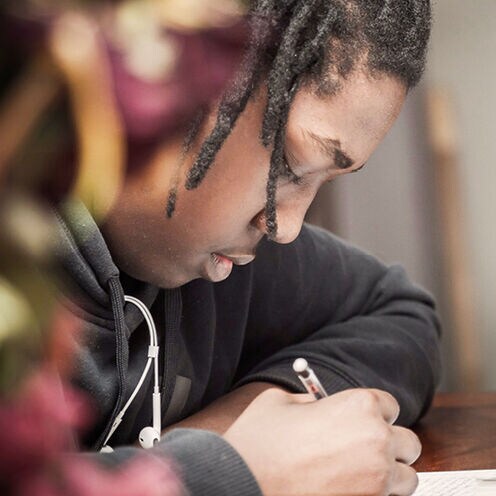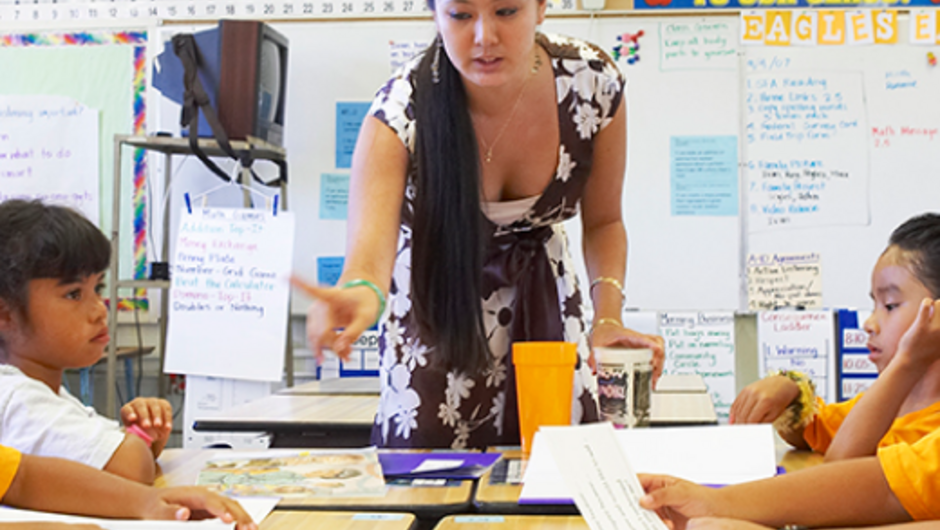
At Segregated Schools, Remote Learning Is Inherently Unequal
For many disadvantaged students, the pandemic has widened opportunity gaps and erected additional obstacles to academic success.
The unfamiliarity of remote learning during a global pandemic has been treacherous, filled with challenges for educators and students alike. The massive shift out of the physical classroom in March 2020 revealed barriers to student learning, namely engagement, access to a stable workspace and reliable technology, and limited mental health and community support.
Yet long before the COVID-19 global pandemic, there was widespread recognition of persistent disparities in educational outcomes in U.S public schools. Such disparities are symptoms of deeply rooted inequities and racial discrimination. The pandemic has shined a bright light on these disparities, with Black and otherwise marginalized students attending racially segregated schools facing the brunt of educational inequities.
To understand that reality, one must first grasp the recurrence of segregation in U.S. schools.
In 1954, the NAACP won a monumental case in civil rights history that would be remembered and cited for decades. That case, Brown vs Board of Education of Topeka, concluded that state-imposed segregated schools were inherently unequal and must be abolished. This case promised educational opportunity, social mobility, and higher education rates for Black students in public schools. However, without proof that local school officials intentionally discriminated against students based on race, desegregation orders unraveled across the country.
Since the 1970s, many school districts have dismantled their desegregation requirements and moved toward local decisions of what counts as equitable schooling opportunities. Today, the typical white student is enrolled in a school that is 80% white even though they are only 60% of public school enrollment overall. Accordingly, 80% of Latinx students and 74% of Black students attend majority nonwhite schools. Racially resegregated schools encounter fewer and lower-quality materials and technology; significantly larger class sizes; less qualified and experienced teachers; and less access to high-quality curriculum. In addition to these devastating conditions for learning, students at racially segregated schools are now battling the added outcomes of a global pandemic that is disproportionately impacting their communities.
Inequities Hamper Student Success During Remote Learning
The coronavirus pandemic has disproportionately affected racial and ethnic minority groups. Students from marginalized communities are meeting their daily school requirements while navigating the social-emotional struggles of sick loved ones, family financial troubles, and increased loneliness and isolation at disproportionate rates than white students.
Remote learning presents its own set of challenges: 15 million to 16 million K-12 public school students live in homes that lack a reliable internet connection or an adequate device to access online classes. Daily student participation is lower in high-poverty schools than affluent ones, resulting in incomplete assignments and course comprehension. While teachers are encountering more concern for anxiety, depression, academic stress, trauma, and grief than before the pandemic, there are minimal mental health supports via virtual platforms.
Nonetheless, students from marginalized communities are surviving a situation that has completely disrupted their world. Over the last three months, I have facilitated a virtual check-in group for students at a racially segregated northern New Jersey high school. Students highlighted the practices they each put forward to keep up with the demands of remote learning during a global pandemic.
- Aaliyahmia explained that being home from school has not been easy. To be successful, she created a safe space where she felt comfortable and confident. She purchased new posters and bullet journals, and she has been drawing more, writing poems, watching new shows, and listening to new music. The last thing she has focused on is writing down her dreams as a source of comfort.
- Tonya was adamant about remote learning being a “setup” for students of color who are the oldest in their families. To support her social and emotional wellness, she sometimes stares at her ceiling and thinks about when she was younger and hopeful and excited to grow up. She says staring at the ceiling makes time freeze, enabling her to appreciate the sound of silence, then a weight is lifted off her shoulders.
- Joshua has felt unmotivated and frustrated from having to do everything on his laptop. His workspace is messy, so he has tried cleaning and organizing to be more productive. He tends to get lost during class when teachers share their screen and tell students to follow along because he has to switch back and forth between tabs. He communicates his concerns to his teachers and asks for more time to complete his work.
- Amarie similarly shared that it has been very hard to stay motivated and be herself during remote learning. Her coping strategies include listening to relaxing music, deleting social media, being to herself, and trying to become more religious. She believes that if you are happy with what you achieve mentally, it will be easier for you to get things done. She clarified that she has had to adjust and get used to not getting the resources she may need and missing the social life she once had with peers and teachers.
Scholarship in the field of education is filled with studies framing marginalized students in terms of what they lack via deficit-based language. The danger in damage-centered research is that “it is a pathologizing approach in which the oppression singularly defines a community,” says Eve Tuck, an associate professor at the University of Toronto who focuses on urban education and Indigenous studies.
I am confident that students are not lacking; they are battling a school system designed without their best interests in mind, and they are creating their own ways to achieve success.
School segregation has led to a concentration of mostly marginalized students receiving inadequate opportunities and facing a disproportionate impact of the pandemic. Asking to disregard students’ academic progress would be wishful thinking. With the ongoing effects of the pandemic looming over us, specifically on marginalized communities, the least we can do is take a moment to pause and reflect on the strengths and accomplishments our students are demonstrating each day despite the world falling apart around them. Educators and school leaders across public schools can learn so much from how students are adapting and thriving in school systems that have consistently disregarded them.

Olga M. Correa is a doctoral student in educational leadership at the University of Massachusetts Amherst. Her current research interest encompasses larger societal factors, namely race, class, and gender in the U.S. and the influence that those factors have had on K-12 education policy and practice.
We want to hear your opinions! To submit an idea for an Opinion piece or offer feedback on this story, visit our Suggestion Box.
The opinions expressed in this piece, and all others in our Opinion section, represent those of the authors and do not necessarily reflect the views and opinions of the Teach For America organization.
Sign up to receive articles like this in your inbox!
Thanks for signing up!
Content is loading...





